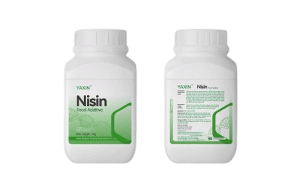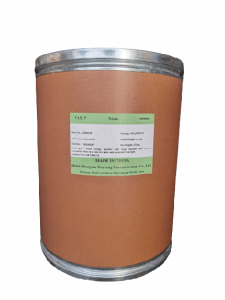
 CONTACT
CONTACT
- Linkman:Linda Yao
- Tel: +8618231198596
- Email:linda.yao@dcpharma.cn
- Linkman:CHARLES.WANG
- Department:Overseas
- Tel: 0086 0311-85537378 0086 0311-85539701
High Quality Natamycin Raw Material,Improve Stability
TIME:2025-03-03The stability of natamycin-lactose preparations is affected by various factors, which are as follows:
I. Temperature
Generally speaking, an increase in temperature will accelerate the movement of molecules in natamycin-lactose preparations, which may lead to the degradation of natamycin or changes in the interactions between natamycin and other components such as lactose. In a high-temperature environment, natamycin may undergo thermal decomposition reactions, and some chemical bonds in its structure may break, thus affecting its antibacterial activity and the stability of the preparation.
Low temperature is usually beneficial for maintaining the stability of the preparation. However, too low a temperature may cause lactose to crystallize, disrupting the physical state of the preparation, and further affecting the dispersibility and release characteristics of natamycin. It is generally recommended to store natamycin-lactose preparations in a cool and dry place, with the temperature preferably controlled between 5°C and 25°C.
II. Humidity
Humidity is one of the important factors affecting the stability of natamycin-lactose preparations. Lactose has a certain hygroscopicity. When the environmental humidity is high, it will absorb moisture from the air, increasing the water content of the preparation. Excessive moisture may trigger the hydrolysis reaction of natamycin, leading to the destruction of its structure and a decrease in its antibacterial activity.
High humidity may also promote the growth and reproduction of microorganisms on the surface of the preparation, further affecting the quality and stability of the preparation. It is usually advisable that the relative humidity of the storage environment is maintained between 40% and 60%.
III. pH Value
The stability of natamycin varies in different pH environments. Under strongly acidic and alkaline conditions, the stability of natamycin will decrease. For example, in an environment with a pH lower than 3 or higher than 9, certain functional groups in its molecules may undergo protonation or deprotonation reactions, thus changing its molecular structure and properties.
Generally, natamycin-lactose preparations are relatively stable within the pH range of 4 to 8. In practical applications, measures such as adding buffers are often taken to maintain the pH value of the preparation within a stable range.
IV. Light
High-energy rays such as ultraviolet rays in light may trigger photochemical reactions of natamycin, leading to changes in its structure, such as the generation of free radicals, etc., thereby reducing its stability and antibacterial activity. Therefore, natamycin-lactose preparations usually should be packaged in a light-shielding manner, such as in brown glass bottles or aluminum foil packaging, etc., to reduce the impact of light on the preparation, and should be stored in a light-shielded environment.
V. Storage Time
As the storage time prolongs, natamycin-lactose preparations will inevitably undergo some physical and chemical changes. Even under suitable storage conditions, natamycin may gradually degrade, its content will gradually decrease, and the antibacterial effect of the preparation will also weaken accordingly.
Generally, natamycin-lactose preparations all have a certain shelf life. Within the shelf life, the preparation should be able to maintain the content and performance of its main components within the specified range.
VI. Other Factors
Other excipients added to the preparation, such as antioxidants, surfactants, etc., may interact with natamycin or lactose, affecting the stability of the preparation. For example, certain antioxidants may form complexes with natamycin, changing its dissolution properties and stability.
The preparation process of the preparation also has an impact on its stability, such as the uniformity of mixing, drying conditions, etc. If the mixing is not uniform, it may result in a too high or too low local concentration of natamycin, affecting the stability and efficacy of the preparation. Inappropriate drying conditions may cause excessive residual moisture in the preparation or lead to changes in the crystal form of lactose, further affecting the quality of the preparation.
- Tel:+8618231198596
- Whatsapp:18231198596
- Chat With Skype







